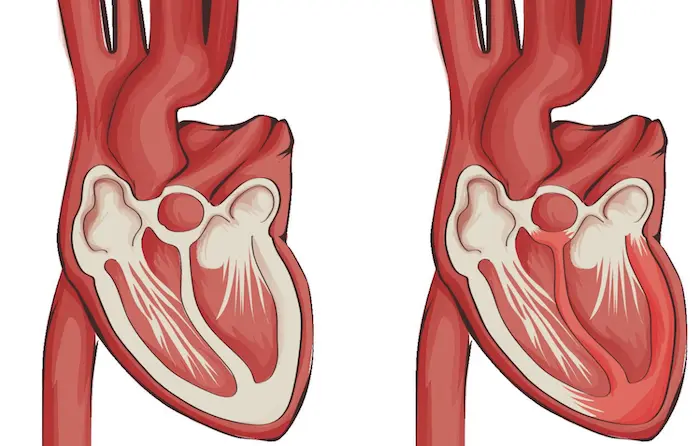Giant cell myocarditis (GCM) is a rare but highly aggressive form of myocarditis, which is an inflammation of the heart muscle. This condition is characterized by the presence of multinucleated giant cells in the heart tissue and is often associated with severe outcomes, including heart failure and even death. Despite its rarity, understanding the prevalence of GCM is crucial for both clinicians and patients, as timely diagnosis and intervention can significantly impact prognosis. In this article, we will explore the prevalence of giant cell myocarditis, its clinical features, diagnostic challenges, and treatment options.
Prevalence of Giant Cell Myocarditis
The exact prevalence of giant cell myocarditis is difficult to determine due to its rarity and the variability in diagnostic methods. However, several studies and medical databases offer insight into how frequently this condition occurs within different populations. This condition is considered an uncommon form of myocarditis, which is itself relatively rare compared to other heart conditions like coronary artery disease or heart failure.
1. Incidence in the General Population
Giant cell myocarditis is thought to account for less than 1% of all myocarditis cases. Some studies suggest an annual incidence of 0.05 to 0.1 cases per 100,000 people. This is considerably lower than the incidence of other types of myocarditis, such as those caused by viral infections, which are more common. The rarity of GCM often leads to challenges in estimating its true prevalence, as many cases may go undiagnosed or be misdiagnosed as other forms of heart disease.
2. Age and Gender Distribution
Giant cell myocarditis tends to affect younger individuals, typically between the ages of 20 and 50. It is most common in individuals in their 30s and 40s, although it can occur at any age. There is also a gender disparity, with men being more commonly affected than women. Studies indicate that males are about twice as likely to develop giant cell myocarditis as females. However, the exact reasons for this gender difference remain unclear.
3. Ethnic and Geographical Variations
Research suggests that giant cell myocarditis may have geographic and ethnic variations in its prevalence. It has been reported to be more common in North America and Europe, although cases have been documented worldwide. The condition appears to be less frequently reported in African and Asian populations, which may reflect differences in genetic susceptibility, environmental factors, or the availability of healthcare and diagnostic resources.
4. Association with Other Health Conditions
Giant cell myocarditis is often associated with autoimmune diseases, particularly those that involve systemic inflammation. Conditions like rheumatoid arthritis, lupus, and inflammatory bowel disease have been linked to an increased risk of developing GCM. In some cases, giant cell myocarditis may occur as part of an underlying autoimmune process, complicating the clinical picture. Additionally, there have been reports of GCM occurring after viral infections, though these are rarer than autoimmune-associated cases.
5. Clinical Presentation and Diagnosis
The clinical presentation of giant cell myocarditis can be quite variable, which further complicates the diagnosis. Symptoms often resemble those of other types of heart failure, such as shortness of breath, fatigue, chest pain, and palpitations.
Because of this overlap, GCM may initially be misdiagnosed as a more common condition, such as viral myocarditis or dilated cardiomyopathy.
Diagnosis is typically confirmed through a combination of clinical evaluation, laboratory tests, and imaging studies, including echocardiography and cardiac MRI. However, the definitive diagnosis often requires a biopsy of the heart tissue, which can be invasive and is not always performed unless there is a strong suspicion of GCM. The challenge in diagnosing giant cell myocarditis contributes to its underreporting and underdiagnosis, further complicating the estimation of its true prevalence.
6. Mortality and Prognosis
Giant cell myocarditis is associated with a relatively high mortality rate compared to other forms of myocarditis. In fact, untreated giant cell myocarditis has a poor prognosis, with up to 50% of patients dying within the first year of diagnosis. The high mortality rate is often due to rapid progression to heart failure, arrhythmias, or sudden cardiac death. Early diagnosis and aggressive treatment are crucial for improving survival rates. Patients who undergo heart transplantation may have better long-term outcomes, although this is a high-risk procedure.
7. Treatment and Management
Treatment for giant cell myocarditis typically involves a combination of immunosuppressive therapies and supportive care for heart failure. Corticosteroids and other immunosuppressive drugs are commonly used to reduce inflammation and prevent further damage to the heart muscle. In some cases, heart transplantation may be necessary if the condition leads to severe heart failure that is unresponsive to medical treatment.
Because GCM is often rapidly progressive and can be life-threatening, prompt recognition and intervention are critical.
However, due to the rarity of the disease and the challenges in diagnosing it, treatment can sometimes be delayed, which may worsen the prognosis. Clinical trials and research are ongoing to improve treatment strategies and better understand the underlying mechanisms of the disease.
Conclusion
Giant cell myocarditis is a rare but severe condition that can lead to significant morbidity and mortality if not diagnosed and treated promptly. While the prevalence of GCM is low, it is important for clinicians to be aware of its potential to prevent misdiagnosis and to ensure that patients receive timely and appropriate care. Research into the underlying causes and optimal treatments for giant cell myocarditis continues, and advancements in diagnostic techniques may help improve outcomes for those affected by this rare and aggressive disease.
Related topics:


